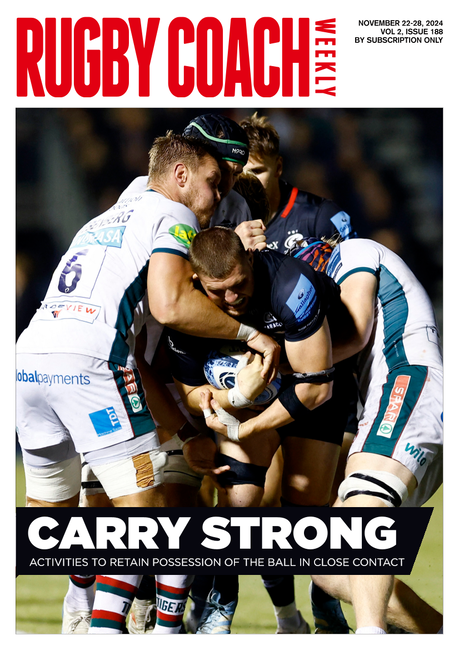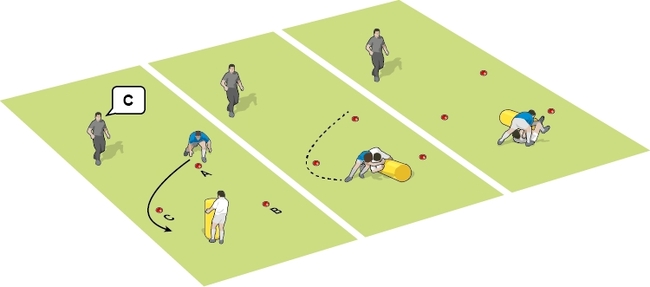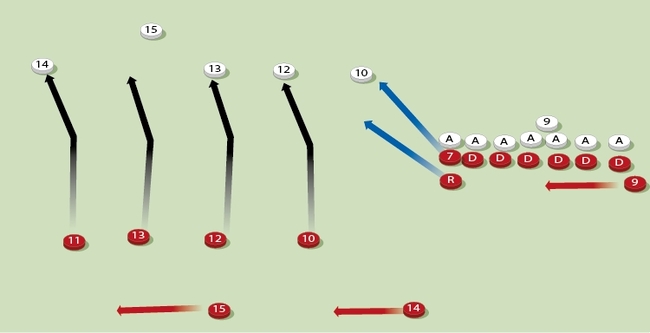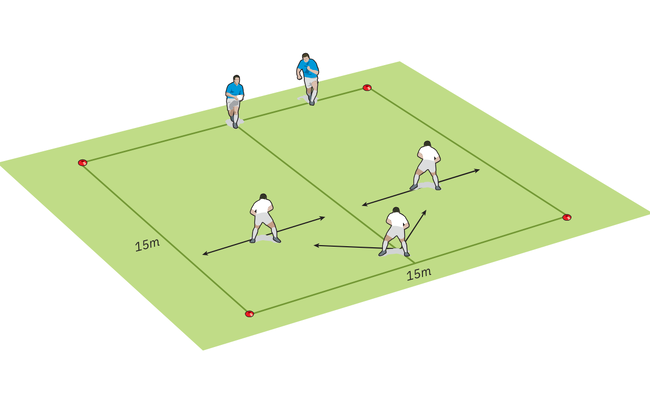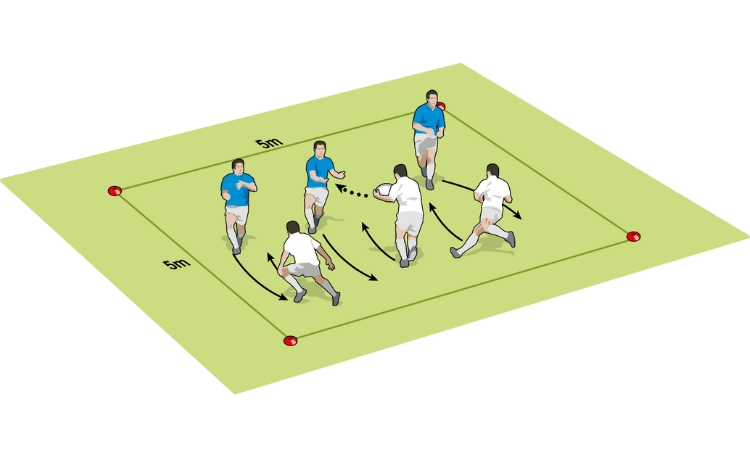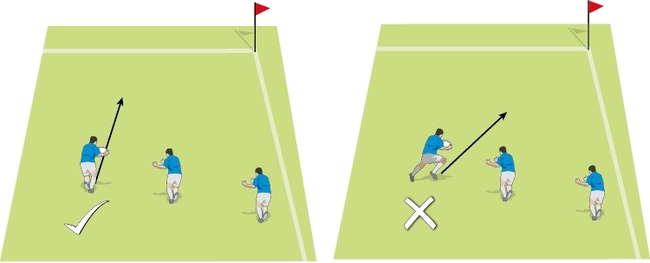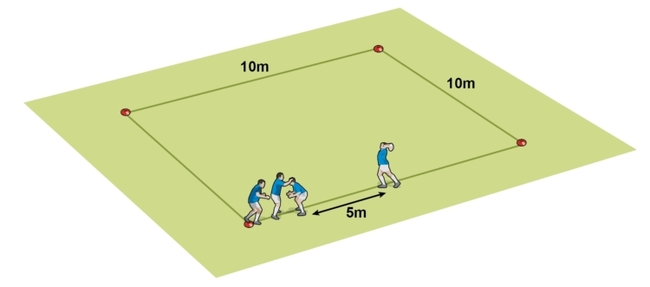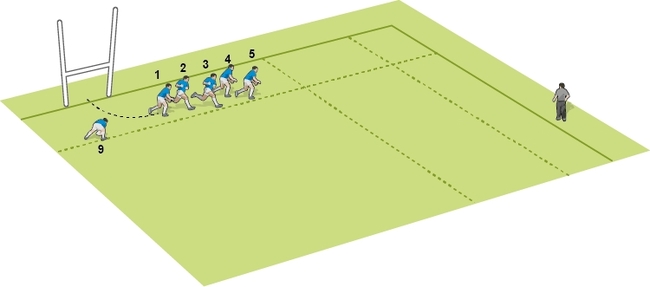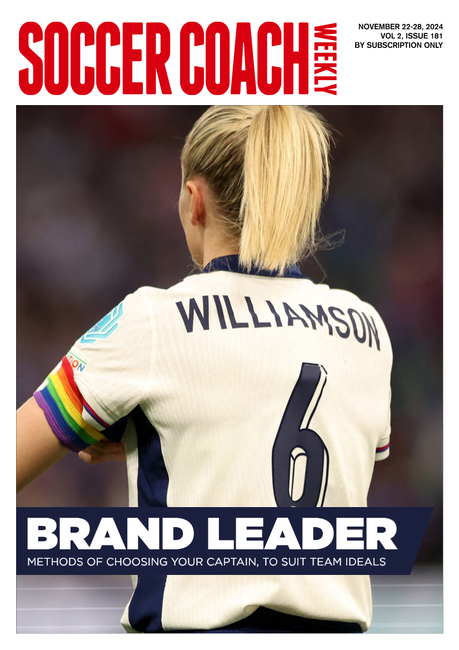Team defence like Rugby League
Defence
It is easy to see the difference that defensive coaches, such as the former England defence guru Phil Larder, have brought from their league days. There is a commitment to an organised defence with a pattern, rather than a man on man style. It is not about individuals making tackles, it is team defence.
London Wasps have been using a rush defence to harry opponents into making mistakes.
As Jonathan Davies, whose outstanding career spanned both codes, wrote in The Independent (a UK newspaper), the sophistication of defensive systems learnt from league can make attacking rugby very hard. He added, however, that "league got them into this situation and now can get them out of it."
Play the ball and rucks
In league, when the tackle is completed, the player puts the ball through his legs to a player behind, who can then run or pass. This is known as "play-the-ball". In league, the quicker the "play the ball", the more dangerous the next play, since defences will be moving backwards to get onside.
Lessons for union: Ball presentation in the tackle area always needs work, particularly clearing out at rucks.
The value of the "ball scrounger" at the tackle area, someone who can present the ball away from the tackle, is worth more, perhaps, than a big hitting player.
Line breaks
The defensive line in league and union is just that, a line. The ability to go through the line, either by finding space or simply busting through is called a "line break".
Passing to break the line
Andy Robinson, the former England coach, identified that league could help players improve the "execution" of their passing. The accuracy of the pass was a particularly strong theme.
Lessons for union: Plenty of work on providing the perfect pass. This means perfecting the weight, height and distance of the pass.
Though league players do spin pass, there is more recourse for them not to do so. It is easier for a player to receive a ball that is not spinning.
Union players could work on varying the length of the pass to beat a defender. The key here is recognising the running line of the ball receiver to be able to judge the length of the pass.
Offloading to break the line
When a player takes a tackle and tries to pass the ball to a supporting player, this can exploit the space immediately behind the tackler. Rugby league makes a habit of using this type of play to break the line, with the supporting players running into a position to receive the pass at pace.
Lessons for union: The timing of the supporting players and the angles they run means that league players make a relatively more effective use of the offload opportunity. League players in the tackle are comfortable to look for the offload, though will not give a fifty-fifty pass if they can help it.
Newsletter Sign Up
Coaches Testimonials

Gerald Kearney, Downtown Las Vegas Soccer Club

Paul Butler, Florida, USA

Rick Shields, Springboro, USA

Tony Green, Pierrefonds Titans, Quebec, Canada
Subscribe Today
Be a more effective, more successful rugby coach
In a recent survey 89% of subscribers said Rugby Coach Weekly makes them more confident, 91% said Rugby Coach Weekly makes them a more effective coach and 93% said Rugby Coach Weekly makes them more inspired.
Get Weekly Inspiration
All the latest techniques and approaches
Rugby Coach Weekly offers proven and easy to use rugby drills, coaching sessions, practice plans, small-sided games, warm-ups, training tips and advice.
We've been at the cutting edge of rugby coaching since we launched in 2005, creating resources for the grassroots youth coach, following best practice from around the world and insights from the professional game.


